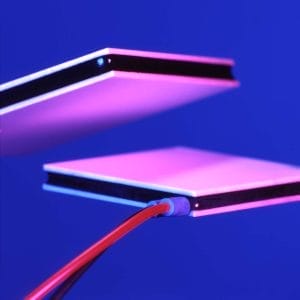Search Products
Moisture Protection Ruggedizing
TRULY MOISTURE RESISTANT
Do not be fooled by so-called “sealed” TE modules now being offered by other TE manufacturers. They use a silicone or urethane based rubber. THIS DOES NOT WORK to seal out moisture. Silicone materials, in particular, are not highly cross-linked: on a microscopic level, there are large spaces in between the long chains of silicone rubber molecules. This space is large enough to allow water vapor molecules to pass through. Intuitively, this makes sense: because silicone materials air-cure, it is necessary that they “breathe” – or they would never cure beyond the outside skin. When the TE module cools during operation, the internal vapor condenses, thereby creating a humidity gradient from the outside to the inside of the TE module. This, in turn, causes water vapor to diffuse through the silicone “sealant” and condense inside.
Once the water is condensed into liquid from inside the module, the water molecules are held together in long chains due to an effect called Van der Waals’ bonding. These are the same bonds that give liquid water its surface tension. In liquid form, the long chains of water molecules are too big to fit through the spaces in between the silicone rubber molecules. This permeability to water vapor and impermeability to liquid water is a recipe for disaster!
Over time, the so-called “sealant” acts like a water pump, since water vapor gets in and the liquid water can not get out. The consequence is corrosion and even electrical shorting as water dissolves the salt residue left behind from the assembly fluxes. The final result will be gradually degrading cooling performance ultimately resulting in catastrophic failure.
In contrast, TE Technology, Inc.’s potting material does not air cure, and its molecules are very highly cross-linked. This leaves only very small spaces between the potting molecules, and consequently water vapor diffusion is greatly reduced. TE Technology’s potting promotes long-term reliability once a cooling assembly is put into operation.
ENHANCED MECHANICAL STRENGTH
This special potting material also enhances the mechanical strength of the TE module, making it more rugged. The largest improvement is in the shear strength, which is the weakest point of an unpotted TE module. Compressive strength is also increased, especially around the perimeter of the module. This extra compressive strength is especially useful in preventing damage to the module if, during the assembly process, clamping forces are accidentally applied unevenly to the module.
While all TE modules gain large increases in strength from this process, the exact amount of improvement is dependent on the particular model of TE module. Generally, only the perimeter of the module is potted. Therefore, TE modules with the smallest footprint have the highest ratio of perimeter to cross-sectional area, and thus have the largest increase in strength. Per special request, most TE modules can also be completely potted. Such completely potted TE modules have survived 20,000 G’s in all three axes!
HOW DOES POTTING AFFECT PERFORMANCE?
The penalty in cooling performance is practically immeasurable for most cases. There is always some small degradation in performance when a module is potted because the potting conducts some heat from the hot side of the TE module to the cold side of the TE module. This will happen regardless of the type of potting compound that is used. To minimize this effect, TE Technology’s potting compound is formulated to be as much of a thermal insulator as possible. In the case of the most common 40mm x 40mm modules, there is generally a 0.5 to 1 °C loss in performance at the operating point, and a 1 to 2 °C loss at DTmax. Often, by replacing a standard TE module with a high performance potted module, there will be no loss in performance at all. As you would expect, the exact loss in cooling performance is dependent on the particular model of TE module. Again, TE modules with the smallest footprint have the highest ratio of perimeter to cross-sectional area, and thus will have the largest changes in performance. TE Technology’s performance charts show both potted and unpotted thermal characteristics–so the exact performance can be accurately quantified.
For additional information, download the publication below in PDF Format:
“The Effectiveness of Water Vapor Sealing Agents When Used in Application with Thermoelectric Cooling Modules”, Michael J. Nagy, XVI International Conference on Thermoelectrics, Dresden, Germany, August 26-29, 1997.



